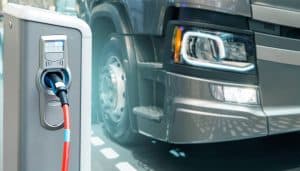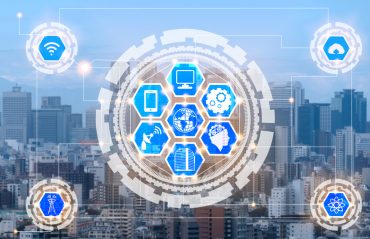
The transportation industry needs new technology, optimized infrastructure, and better data to move towards electric and autonomous vehicles.
Congress is poised to make decisions about transportation emissions that have the power to affect the industry for decades to come. While timelines for an anticipated multi-trillion-dollar infrastructure bill are still unclear, forward-thinking companies are seeking energy-efficient alternatives like electric and autonomous transportation to meet their needs.
There is existing network data and technology ready to support the move to electric and alternative freight solutions. Some of the world’s most notable brands are already using such data and technology. The shipping industry needs to examine today’s data to improve each company’s current operations and to start conversations about shaping U.S. infrastructure for a competitive, sustainable future.
What should shippers know in 2021 to prepare for electric and autonomous transportation?
To discover which solutions are practical and viable, shippers and carriers need access to technology, accurate data, and expertise. Only then can they calculate a cost-benefit analysis, estimate annual emissions reductions, and achieve cost savings. Already, most companies have information about their network and its fuel sources that can help build a baseline. To support strategic decision-making, companies (and government leaders) need more, including:
- Broad knowledge about the transportation ecosystem and how to calculate what alternative fuels or vehicles make sense
- Constant technology updates to monitor fluctuating battery costs, new sensor developments, etc.
- Objective performance data to augment what providers and vendors publish
- Information about legislation and regulations, which are evolving rapidly, to bring forward solutions that will serve long into the future
A company can work to build that information internally. That said, the true value of this information comes from understanding wider industry context beyond any single player. Looking at broader freight flows, shipper and carrier partnerships, and supply and demand will help the transportation industry make efficient and feasible adjustments that elevate a wider playing field.
Alternative energy vehicles call for new infrastructure
Data provides a necessary starting point. However, before the industry can benefit from alternative energies or the vehicles they propel, some supports must be in place.
For example, current alternative energy infrastructure is lacking. Some geographies have a highly developed fueling station network. However, reliable use is sporadic and must be intentional to succeed. On the other hand, electric vehicle charging stations are an area of huge opportunity for the industry and are lacking across the board today.
Additionally, it isn’t enough to look at tailpipe emissions for diesel, electric vehicles, natural gas, and beyond—lifecycle emissions matter. Even electric vehicles, one of the lowest emitting alternatives on the market, won’t advance climate goals if they are charged using electricity generated via coal-burning plants. Beefing up the renewable energy contributions to the power grid will reduce emissions from both transportation and facilities.
Better data today can inform tomorrow’s investments and infrastructure
Transportation and logistics professionals will be crucial to paving the way for the widespread commercialization of alternative energy solutions. By understanding their current baseline and clearly defining their goals, these teams can help identify exactly where their network is primed to adopt new vehicle and energy types today.
It may sound simple, but understanding the greenhouse gas contributions in each part of a company’s existing network is critical to finding out what levers to pull to move forward. A great first step for 2021-2022 is getting solid data about an organization’s freight flows to identify routes and hubs where new energy types would fit in seamlessly to create high impact.
Then, establishing an ongoing data collection system to capture and measure the benefits of improvements will help determine if their efforts are making headway. Having a nuanced approach to where these new technologies fit in your network and industry will serve the whole sector.
When should companies start considering electric and autonomous transportation?
Our industry is ready for change. In the past, alternative energy initiatives tended to be specialized projects with limited scope.
Now, legislation could continue to encourage us to think about how to prepare infrastructure and people to implement change nationwide. That’s much bigger-picture thinking than we have ever seen before from the government. It’s also a critical change because this can’t come from just one shipper or even one network. It has to come from the collective vision and action across the transportation industry. It’s an exciting evolution, expected to lay the groundwork to get things done.
Not everything has changed, of course. To get control of emissions, we still need to treat the transportation industry like a dynamic ecosystem rather than focusing on any one technology as the end-all solution. Studying this landscape of options allows us to layer in the best opportunities for investment down to the lane level. History has proven the value of having a diversified transportation portfolio. Adding alternative energies and new technology to the mix will contribute additional stability and longevity to transportation networks.
And data is still key to effective decision-making. Businesses should new data sources to weigh where electric and autonomous transportation is most effective in their individual networks. The more effectively we mine comprehensive data for insights, the more likely we are to make the best choices. The sooner we get our plans in place, the more effectively we can influence infrastructure decisions that can help make our climate goals a reality.




























